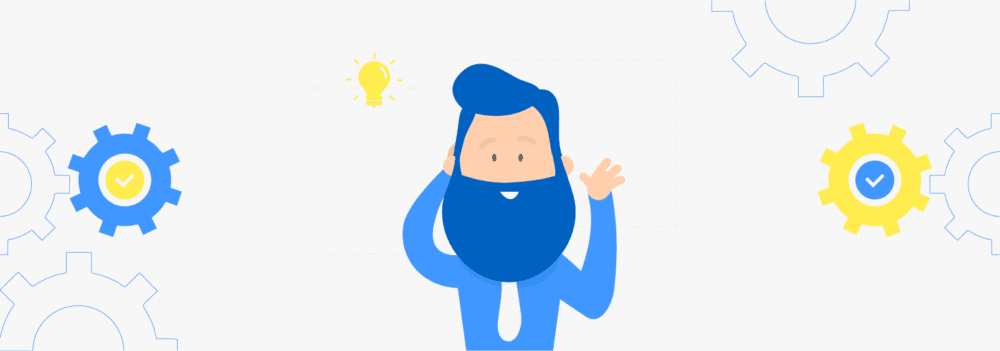11 benefits of continuous improvement to future‑ready organizations
Customer demands and market requirements are changing faster than ever. It’s no longer enough to merely ‘dust off’ your processes every now and then. Continuous improvement is the best way to become and to remain future-ready! But what is continuous improvement? Continuous improvement focuses on making small, incremental improvements to process quality and productivity on an ongoing basis. Cutting costs...


Customer demands and market requirements are changing faster than ever. It’s no longer enough to merely ‘dust off’ your processes every now and then. Continuous improvement is the best way to become and to remain future-ready!
But what is continuous improvement?Copied
Continuous improvement focuses on making small, incremental improvements to process quality and productivity on an ongoing basis. Cutting costs and accelerating turnaround times are other common goals.
One of its main characteristics involves making changes in close consultation with the staff directly involved. After all, they have their finger on the pulse and are often personally responsible for actually implementing the improvements. So, continuous improvement really is a process that requires the support of your entire organization.
3 steps towards continuous improvementCopied
You can split the continuous improvement process into three steps.
- Start by analyzing your current processes. What can we improve? Which processes aren’t properly aligned with our broader organizational objectives? By answering these questions first, you can start planning how to make improvements.
- Next, implement the improvements you identified in the first step. And preferably in consultation with the people directly involved or impacted. These include senior and middle management, departmental staff, suppliers and customers.
- Continue monitoring, evaluating, and learning to make sure the changes you’re making are having the effects you want.
So, what are the benefits of continuous improvement?Copied
Why adopt continuous improvement? What are the benefits of working in this way? Let’s take a closer look at some of the foremost benefits of continuous improvement.
1. Greater employee engagement
Employees who experience higher job satisfaction levels and are more engaged with your company can be powerful agents for change and improvement. For example, research conducted by Towers Perrin revealed that companies with high employee engagement levels have 19.2% higher operating incomes than their competitors with lower levels.
Continuous improvement gives staff the basis they need to solve the problems they encounter in their work themselves. This not only improves efficiency, but also sends the signal to your staff that you appreciate and value them and their vision.
2. Reduced staff turnover
Satisfied, engaged employees are often more loyal. That’s why continuous improvement is a great way to help reduce staff turnover. Which is great news because high staff turnover is detrimental to your company’s operational continuity. Reducing it helps cut the amount of time and money you need to invest in recruitment, selection, onboarding, and retraining.
3. Improved customer service
Continuous improvement creates a framework that gives you better insights into your customers’ needs and requirements. What are your customers looking for? What problems are they encountering? And which products or services create the most value for your customers? Armed with the answers to these questions, you can anticipate customers’ needs and requirements more quickly and accurately.
4. A more proactive learning culture
Knowledge rapidly becomes outdated in this fast-paced digital era. But continuous improvement forces you to constantly investigate what could be different, better, more efficient … In short, it creates a proactive learning culture that encourages staff to follow the path least trodden, to learn new things, and to think outside of the box.

5. Higher-quality products & services
Because continuous improvement focuses on making small, incremental improvements to your processes, it also boosts your products and services’ market value. By making your processes more efficient and reducing waste, you’ll also increase your profit margins!
6. Higher productivity
Eliminating superfluous steps makes your processes more efficient as a whole and reduces throughput times. In other words, you can do more in less time and your productivity increases.
7. Faster delivery
If you’re producing more products faster, then your time to market is shorter. This gives you a competitive edge over your competitors who take longer to get their products to market.
8. Lower error ratio
Your error rate will also start to decline as you continue to improve your processes. Quality levels will increase significantly, which is good for your reputation and positioning.
9. Safer workplace
Continuous improvement also involves paying attention to the quality of the workplace. Is everything neat and tidy? Are processes, machinery, and workspaces safe to use? Continuous improvement should also provide answers to this type of question and make safety in the workplace a top priority.
10. Better insight into objectives & strategies
Continuous improvement also raises knowledge levels among employees about your organization’s objectives. Terms such as ‘strategy’ and ‘core values’ then take on greater meaning for your entire workforce.
11. Greater focus on innovation
In the current economic climate, change is the only constant. Today’s innovations may be totally outdated in six months’ time. Continuous improvement encourages agility and increases adaptability. Vital for any company looking to remain relevant in the future!
Continuous improvement & skills managementCopied
You can get the most out of your processes and operations by combining continuous improvement with skills management. Because skills management helps visualize your staff’s skills and competences, it becomes much easier for you to find the right people for the right task.
This combination also makes it easier to monitor your staff’s progress and to respond adequately and effectively to employees off sick or peak periods.
Read our article, How continuous improvement and skills management go hand in hand to find out more.
It’s also important to use the right tools for the job. Download these templates to find out how skills matrices can help you reap the rewards of continuous improvement and skills management combined.
But chances are that after a while you’ll want to take your skills management system to the next level. In which case, schedule a free demo to discover the benefits of AG5’s skills management software!
Use AG5 to identify skill gaps
Say goodbye to Excel matrices. Start using AG5’s plug and play skill matrix software.
ISO27001 certified
Free trial available
